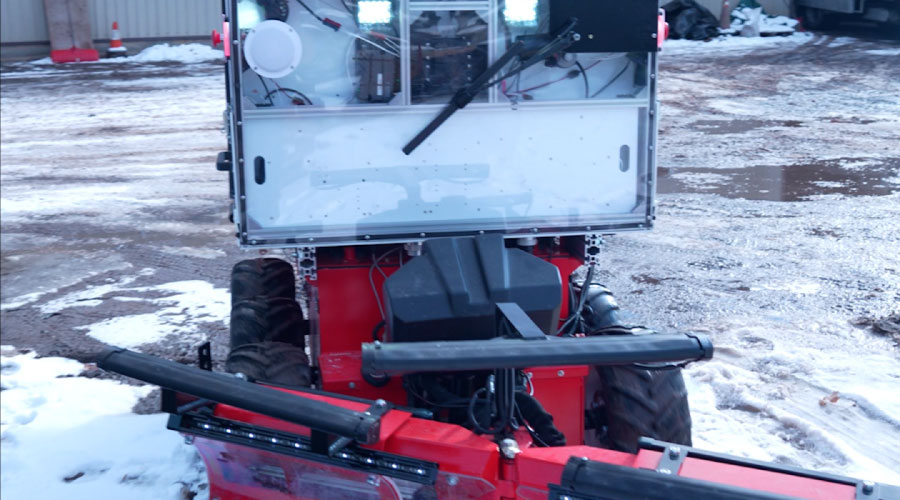Robots Making Impact in Snow & Ice Management Preparation
Automatic equipment gains traction in snow and ice management.
By Cheryl Higley, Contributing Writer
Robotic equipment can mow lawns, vacuum floors and provide security at institutional and commercial facilities, but do not expect to see an army of robots pushing snow and treating sidewalks at facilities’ sidewalks this winter.
While mowing robots are growing in popularity, the trend has yet to take hold in commercial snow operations. But automation is starting to influence the way grounds managers make equipment specification decisions for their facilities during the winter months.
Site monitoring
One area where automation might come into play for managers is the growing use of cameras for site monitoring. Cameras give the snow equipment operators important data, such as air and surface temperature, weather conditions and a video feed of the grounds.
This data improves decision making and prevents unnecessary service and salt applications, saving the grounds department time and money. Many of these solutions also allow workers to access the cameras for a first-hand view of their sites.
“Using site cameras reduces our time in having to go out to check sites,” says Ryan Hebel, vice president of Green Ventures Lawn Care in Kitchener, Ontario, who participated in the Snow & Ice Management Association (SIMA) Snow & Ice Symposium on using automation to optimize operations.
A manager can review the data and can avoid dispatching crews unnecessarily. This benefit is especially important because freezing rain is becoming more common in many areas. For example, if it is snowing and precipitation changes to freezing rain, managers can review surface and air temperatures and determine whether a salting application is necessary or if it would wash away, wasting product.
The symposium also focused on dash cameras and GPS tracking, both of which managers can use to streamline billing processes and use as evidence in the event of a claim.
Robots for clearing
Hebel says he has been using snow robots for three years on residential driveways and smaller sidewalks. While robots are not yet common at commercial and institutional facilities, he says they eventually will make their way into the market due to the benefits.
“When we try to automate, we do it with the team,” he says. “We use robots as a multiplier for us. We’re not taking away jobs. They’re supplementing them in more meaningful ways.” Automation also allows grounds operations to plow sites multiple times while preserving manpower.
“Because the robots are plowing sidewalks, it allows our team to hit entryways or priority areas,” Hebel says. “They can then go back and clean up anything the robots left behind. Over these three years of trying to work with more robots, we’ve realized how important the human element still is and always will be.”
Cheryl Higley is the director of education and content for the Snow & Ice Management Association (SIMA). This article was provided by the SIMA, the industry leader in education, training and resources for professional snow managers. Learn more about SIMA at www.sima.org.
Related Topics:












